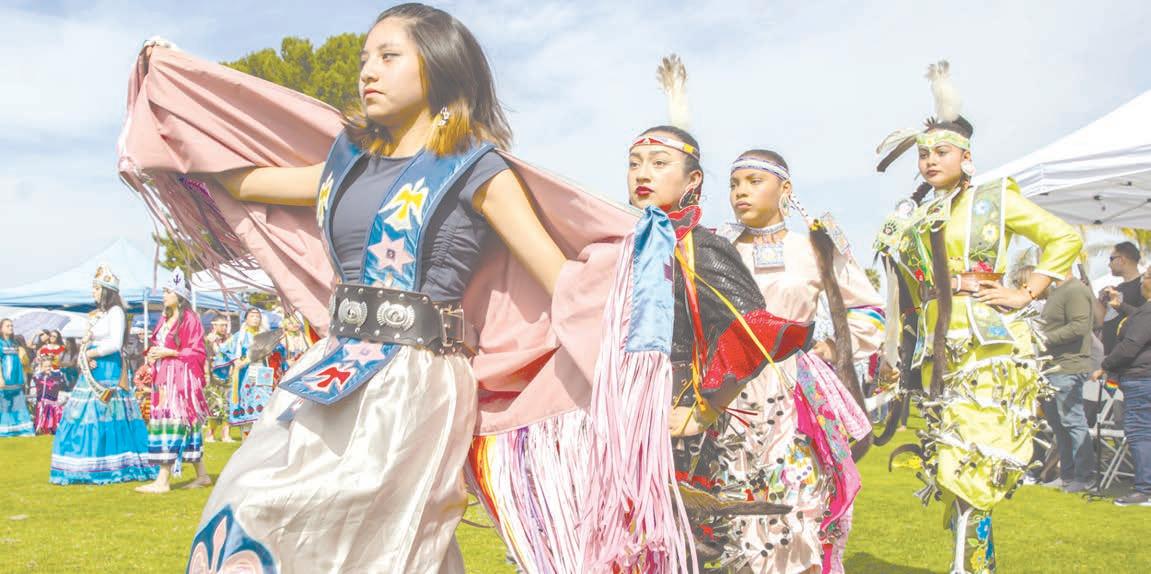Remembering Jim Spillers
Beloved former Athletic Director advocated for women’s sports, LGBTQ students Story Page 11


Beloved former Athletic Director advocated for women’s sports, LGBTQ students Story Page 11

Park born of strife celebrates richness of Chicano culture and resurrection of Logan Heights
Read the full story, Page 6-7

Brilliant production of ‘The Crucible’ revisits Red Scare during Era of MAGA. n NATIONAL CITY
Dental Hygiene program target of discrimination lawsuit
BY ALEXA LIMAA pair of former dental hygiene professors have filed a lawsuit against Southwestern College alleging retaliation by administration after they reported “severe and pervasive” racial discrimination.
College officials declined to comment on the case because it involved personnel issues and pending litigation.
Tenured professors Karen Kubischta and Dr. Linda Lukacs filed suit against Southwestern College in April. Their attorney Arash Sadat said Kubischta and Lukacs had plentiful documentation of the incidents and many supporting witnesses. Sadat said the professors were required by Title IX to report suspected discrimination but were punished for doing so.
“Southwestern College has a pretty long history of racial discrimination,” said Sadat. “There have been reports, allegations from a variety of parties, regarding the way that minority students especially are treated at the school.”
Nelly Ramirez, 33, a dental hygienist and alumnae of the program, attended SC from 2018 to 2020. She said her experience in the program was “very hectic and stressful.”
“The environment was very hostile,” she said.
Ramirez said she and her classmates had a project that required them to choose a community to educate about oral hygiene and nutritional counseling. She said they proposed a plan to serve children in southern San Diego. When they discussed the food choices the professor told her to also include tacos and burritos in the lecture.
Students of color were stereotyped and picked on, she said.
“I recall other students (of color) being yelled at, being grabbed by the


ative Americans from across the U.S. gathered at Southwestern College for a spirited and spiritual celebration of life. Biology major Winter Begay of the Navajo (Diné) Nation was honored as Head Young Woman. Begay is an indigenous dancer who tours America performing and representing her People.
Story Page 10
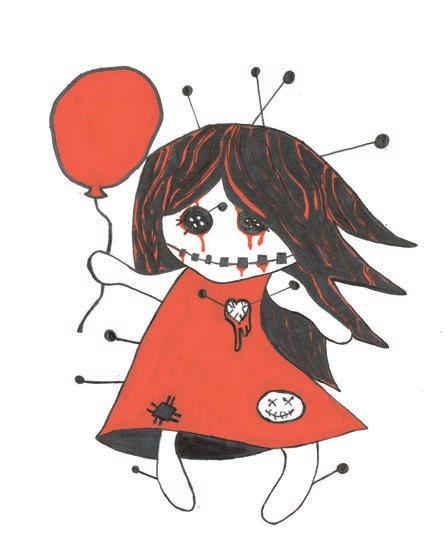
Once again there is trouble in paradise. One of America’s most beautiful campuses has one of America’s ugliest records toward LGBTQ students, according to a national civil rights organization.
For the ninth consecutive year Point Loma Nazarene University has made Campus Pride’s list of America’s Worst Colleges and Universities for LGBTQ students. PLNU was listed for its failure to make LGBTQ students feel safe on its campus and its prejudicial policies toward students in same sex relationships.
LGBTQ activists and their allies are once again urging Southwestern College to re-examine its relationship with PLNU and to cut off the conservative Christian private school until it modernizes its policies about and treatment of LGBTQ students.
It is a cancelled screening of a documentary that has the rightwing seaside campus once again on the defensive in San Diego County. PLNU administrators recently blocked the screening of the historical documentary “1946: The Mistranslation that Shifted Culture,” a film about the roots of the anti-gay movement among the Christian Right. Voices of Love, an LGBTQIA+ organization comprised of PLNU students and alumni, had scheduled a screening of the documentary. Voices of Love leaders said “1946” was cancelled three days before it was to be shown.
Marshael Salgado, associate minister of University Christian Church and a PLNU alumnae, said the administration’s move to cancel the screening was “really disappointing.”
“Universities and college campuses should be safe places for people to learn,” she said. “If you are doing a good job as administrators, as staff, you are teaching students to think critically. Point Loma should allow students to think for themselves and make up their own minds about issues.”
Laurena Cazares, a PLNU alumna and leader of the Loma LGBTQ Coalition, agreed. She said
OUT OF STEP
17%
A 2020 survey of 180,000 undergraduate and graduate students found nearly 17 percent identified as gay, lesbian, bisexual, asexual, queer, or questioning, while 1.7 percent identified as transgender, nonbinary, or questioning.
Source: Association of American Universities

“My firm belief, informed by my faith, is that God’s love is truly for all people. I am thoroughly affirming of the LGBTQIA+ community. I love the story and mission of Jesus Christ and equally grieve at how religion is used to harm and control people.”
TUCKER former PLNU professor

Professors claim college ignores bullying, racial discrimination
arm,” she said. “I remember reporting the professor on more than one occasion about her comments to Title IX and nothing was done. There was no follow-up by the school at the time.”
Nicole Arreola, 31, is a dental hygienist who graduated from the program in 2020. She said there was a culture of racism and discrimination in the program.
“I definitely felt like we all had our hands tied because we were there to get an education and do well in school, based a lot on grades and point systems,” she said. “I definitely felt like a lot of us were in a very vulnerable position, especially coming from never having a dental background to now learning a completely new skill.”
Arreola said she never experienced racist comments but witnessed classmates being harassed by professors. She said she met a lot of students who made complaints to the director about a certain professor who still works in the program, which is based in the National City Higher Education Center.
“I am really proud of Dr. Lukacs and Professor K for supporting us,” she said. “It just feels really good that someone has our back. It’s unfortunate so many incidents had to happen for them to be pushed into the position that they are in right now.”
Kubischta graduated from the dental hygiene program in 2007 and later become an adjunct instructor. She became a full-time tenured professor in 2018. Lukacs, an NYU College of Dentistry graduate, has taught at SC since 2001 and earned tenure in 2008.
Kubischta documented “racially discriminatory” comments allegedly made by Dental Hygiene Director Jean Honny, according to Sadat. Kubischta lodged a formal complaint against Honny, Sadat said, which an independent investigation substantiated. After the investigation, Sadat said, the dean of the NC HEC advised Kubischta to handle her complaints in-house rather than through the Title IX process.
Kubischta and Lukacs reported to the Title IX department that the program engaged in “bullying, intimidation, unwarranted physical touch, verbal abuse and retribution,” according to Sadat.
Kubischta and Lukacs endured a “campaign of retribution” and a “toxic work environment,” said Sadat. Both professors “had no option but to leave their tenured positions and seek employment elsewhere,” he said.
“It’s tragic what these respected professors were subjected to,” said Sadat. “They spoke out against wrongdoing, but the college attempted to silence them. We intend to hold Southwestern accountable.”
The Sun reached out to Southwestern College Vice President of Human Resources Angela Riggs and National City HEC Dean Christine Perri for comment. Sofia Salgado Robitaille, executive director of Advancement and Community Engagement, said in an email that she was authorized to answer on their behalf.
“Southwestern College has been engaged for several years in the deep work of equity, which must also include accountability,” read her statement. “Although we cannot comment on any personnel matters and pending litigation, we remain focused on the work to best serve our students, employees and our broader community”
“1946” was a factual historical study of biblical text that made the case that the term “homosexual” never appeared in the Christian scriptures. Anti-gay language began appearing in biblical translations and rewrites in 1946.
PLNU sends conflicting messages to the broader community when it clamps down on LGBTQ citizens, said Salgado. An institution attempting to attract government and private funding to develop 21st century STEM programs is still mired in outdated prejudices from the 19hth and early 20th centuries, she said.
“Point Loma prides itself in being a center for thinking and teaching,” she said. “A good professor teaches you multiple perspectives and critical facts. It is censorship to try to limit what students hear and what perspectives they are hearing from, especially when it is from a documentary or guest speaker. It hurts students (when they do not) hear an array of perspectives.”
Salgado said she had many excellent professors and enjoyed her PLNU experience but does not like its rules and policies that she said discriminate against LGBTQ students. The institution’s attitude toward its LGBTQ students leaks over into other forms of prejudice and even hate speech, she said.
PLNU was rocked earlier this year by the discovery of hate speech on walls of a bathroom and the words “I hate Blacks” spelled out in toilet paper on a bathroom floor. Salgado said she was glad to hear PLNU was investigating the racist messages, but questioned the atmosphere that seems to encourage this kind of behavior.
It comes from the top, she said, the Midwestern leadership of the conservative Church of the Nazarene which provides most of PLNU’s funding.
“These values the (Nazarene) denomination lives by (are causing) a lot of brokenness right now,” she said. “They are out of step with what is going on in America and Southern California.”
Cazares agreed.
“I just want PLNU to know that the writing is literally on the wall,” she said. “It really has become unsafe and more dangerous at PLNU.”
Cazares said PLNU’s leadership may not actively encourage anti-LGBTQ behavior, but it fuels a culture that encourages discrimination. Calling LGBTQ students sinners who need to change reduces their humanity and makes them targets.
“Where the problem exists is student-to-student,” she said. “Last year the graffiti was done in the resident halls and the school did not have a strong response. I think it creates a culture where that is allowed on campus. For LGBTQ students that creates a hostile environment.”
LGBTQ students were subjected to slurs and insults, Cazares said.
“Conservative students would get into their car and hang out the window yelling ‘fag’ or sometimes the whole slur,” she said.
Other student clubs would intentionally block Voices of Love out of meeting spaces, she said. Failure by PLNU administration to signal its displeasure with anti-LGBTQ and racist behavior sends the message to students that what they were doing is allowable, she said.
“I think there is a (sizable) percentage of students that don’t think we (LGBTQ people) should be allowed to attend PLNU,” she said. “When you hear about these hate incidents they are not coming from the professors, they are coming from students with their own personal beliefs.”
LGBTQ SUPPORTERS FIRED
Salgado said she thinks most faculty at PLNU are either supporters of LGBTQ students or do not engage in anti-gay rhetoric. Due to the fraught campus climate, however, they generally keep that to themselves. Exceptions are journalism professor Dean Nelson, a deeply respected figure in academic and professional news media circles. Nelson has called PLNU’s
THE RAPIDLY GROWING NUMBER OF TRANS AND NONBINARY STUDENTS
While this is the first year that the Common App has asked gender identity, other forms and surveys have been doing so for much longer, and these sources show that the number of students openly identifying as trans and nonbinary has been quickly increasing. For example, among the nearly 27,700 undergraduate students who completed the American College Health Association’s National College Health Assessment (NCHA) in Fall 2016, the percent who identified as trans or nonbinary was 1.6% (ACHA 2016). Five years later, in Fall 2021, this figure had risen to 4.6% (ACHA 2021). This past spring, when more than 54,000 undergraduates filled out the assessment, it was 5.7% (ACHA 2022). Almost all of this increase has come in less than three years.
GENDER IDENTITY FINDINGS
On the Common App, 3,521 students wrote in a gender by using the “add another gender” option by itself or in combination with one of the gender choices provided. These students offered about 130 different genders; the most frequent responses were genderfluid (41.5%), genderqueer (9.8%), trans man (9.0%), agender (8.4%), and demigirl (5.1%).
2016 the percent of undergraduate students who identified as trans or binary was 1.6%
strictures against LGBTQ students and their free speech rights “backwards” and has openly called for change.
“Dean Nelson is a personal hero of mine,” Salgado said. “He is a source of light.”
Less venerated faculty and administrators have been terminated or pushed aside for supporting LGBTQ rights and PLNU students who belong to the LGBTQ community, she said. Former Dean of Theology Mark Maddox was fired recently after he defended adjunct instructor Melissa Tucker for openly supporting LGBTQ students. Tucker, a minister at Normal Heights United Methodist Church and co-leader of San Diego United Youth Group, an “open and affirming group” that welcomes LGBTQ Christians, was shunned due to her outspokenness and off-campus work with the LGBTQ community, Salgado said.
“Some faculty were told never to hire (Tucker) again for an adjunct position because she was working at an open and affirming church and because of her work with the LGBTQ community,” Salgado said. “She had deep roots with the students at PLNU.”
Students rallied in support of Maddox and Tucker, to no avail.
“The situation with (Melissa Tucker) was just an excuse to fire (Maddox),” said Salgado. “(PLNU administrators) had wanted to fire him for a long time because of his progressive views.”
MEXICAN PRESIDENT SHUNNED
Salgado said PLNU has “shot itself in the foot” a number of times in recent years by making petty decisions that damaged the school’s reputation. One such controversy involved the shunning of former Mexican President Vicente Fox.
PLNU had invited Fox to speak to students about international cooperation and the need for the United States and Mexico to work together collaboratively. His appearance was cancelled about two weeks prior to his visit when PLNU heard he had advocated for the decriminalization of marijuana.
“The university did not like it,” she said. “(Administrators) were afraid he was going to mention something they did not agree with in his speech, so they basically told him he was no longer invited.”
Fox was in Japan at the time and said he was stunned by the decision. Nelson and Salgado’s father moved the Fox appearance to the University of San Diego, even though PLNU had already paid his honorarium and mailed promotional materials to students’ homes to encourage a large audience. Salgado said the episode underscored the fundamental problem with PLNU leadership and the reason the university will never attain its lofty ambitions unless it modernizes its thinking.
“You are trying to teach us to think critically, so why don’t you trust us enough to make up our own minds?” she said. “It is really disappointing to see that (no lessons have been learned) and this still happens.”
Cazares said PLNU’s baked-in prejudice starts with its Student Handbook and Community Living Agreement, which include policies antithetical to LGBTQ students.
“It is God’s intention that in the sacramental union of marriage a man and a women may experience the joy and pleasure of sexual intimacy and from this act of intimate love new life may enter the world and into a covenantal community of care,” reads a section headlined “Human Sexuality.”
The passage continues:
“Students are expected to abstain from sexual intimacy outside of heterosexual marriage.”
“PLNU seeks to be a community where lesbian, gay, bisexual, transgender and intersex persons are treated with dignity, grace, and the holy love in the Spirit of Christ. We recognize the complexity of current issues related to same sex attraction, same-sex marriage, and gender identity. The university desires to faithfully care for all students while engaging these conversations with respect, care, humility, courage, and discernment.”
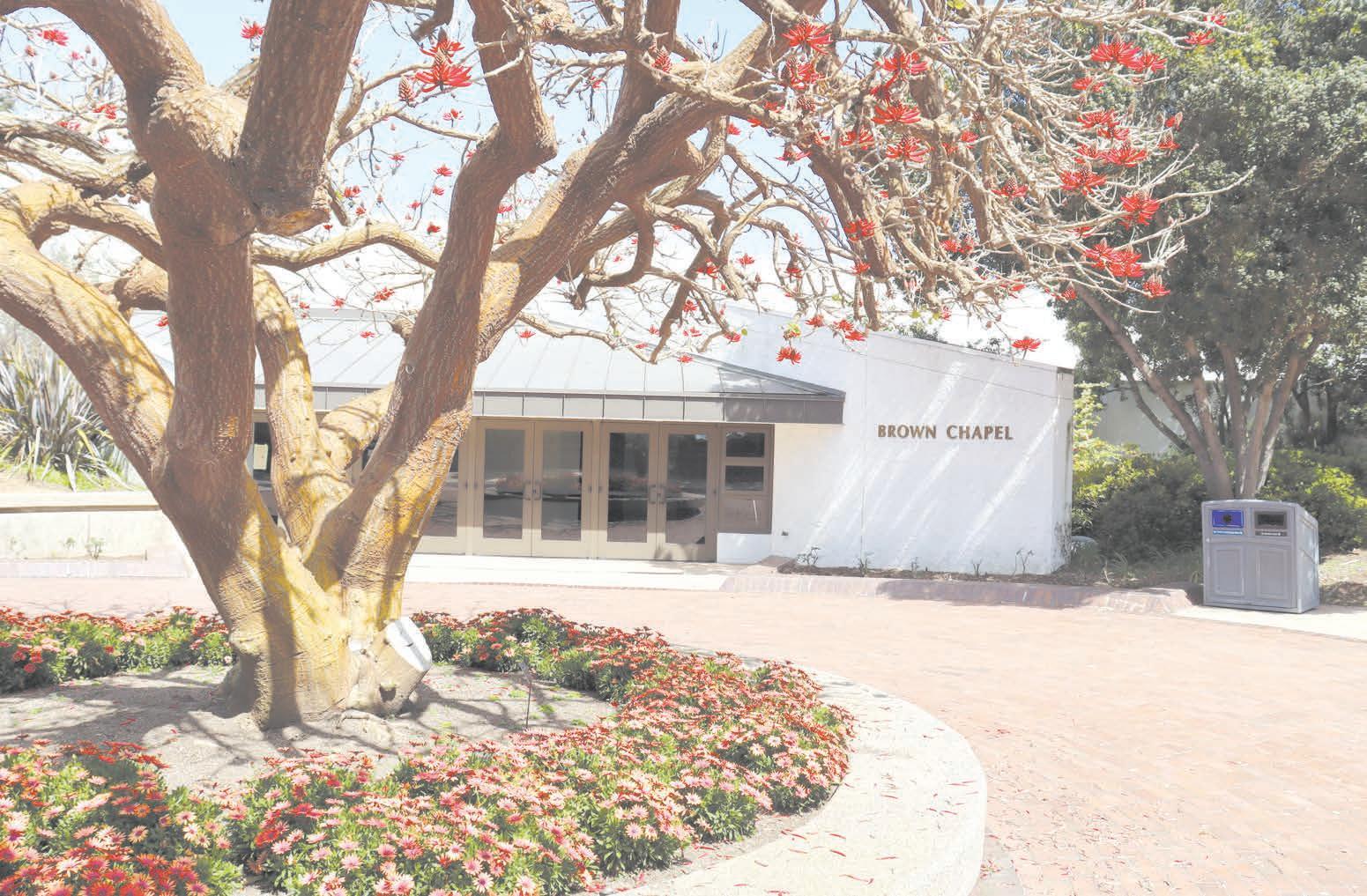
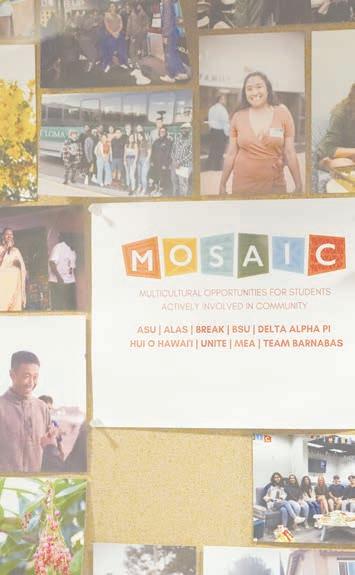
PLNU also offers “counseling” for LGBTQ students, but the catalogue gives no details as to the nature of the counseling.
Southwestern College, on the other hand, is committed by state and federal law to follow the non-discriminatory guidelines of Title IX, which reads, in part: “No person in the United States shall, on the basis of sex, be excluded from participating in, be denied the benefits of, or be subjected to discrimination under any education program or activity receiving Federal financial assistance.”
Southwestern College’s website spells out its prohibitions against discrimination on the basis of “sexual orientation; gender; gender expression (a person’s gender-related appearance and behavior whether or not stereotypically associated with the person’s assigned sex at birth), gender identity and other characteristics related to a person’s sex.”
Cazares said the differences are stark. PLNU’s language, she said, and gives anti-LGBTQ staff and students tacit support.
“Those are things that are more conservative that faculty, staff and students can point to that say ‘You are not welcome on this campus’ even though those aren’t the words coming out of their months.”
“Students should not have to be straight passing,” she said. “If you cannot exist as your full self and feel valued, then the university’s motto –Who You are Called to Be – is bullshit.”
Southwestern has a contract with PLNU to teach upper division classes on the Chula Vista campus in four subjects and to facilitate SC students studying at PLNU or transferring to the university. Students who complete the reciprocal program would receive

“I think there is a (sizable) percentage of students that don’t think we (LGBTQ people) should be allowed to attend PLNU. When you hear about these hate incidents they are not coming from the professors, they are coming from students with their own personal beliefs.”
LAURENA CAZARES Loma LGBTQ Coalition PLNU alumna
Bachelor’s degrees from PLNU. SC’s website describes the program: “Southwestern College partners with Point Loma Nazarene University to offer you a variety of bachelor’s degrees that you can earn without leaving SWC’s campus. Earning you bachelor’s degree from PLNU opens new doors of opportunity in your professional and personal life, and can help you achieve your career goals.”
Degrees included in the arrangement are nursing, criminal justice, business and child development.
Southwestern’s claim that students can complete a Bachelor’s degree from PLNU entirely on the Chula Vista campus is not true, according to Southwestern and PLNU alumna Jen Valenzuela. Members of her family, she said, were among those forced to finish degrees in person on the Point Loma campus.
“Imagine a very, very open and outspoken queer person decides to take child development and ends up at Point Loma,” she said. “How do we let them work on their degree for years and then have them end up at a place where they won’t feel welcome?”
“It is kind of crazy that Southwestern has CHEL and says it is an affirming campus, but it is also in a relationship with a college that doesn’t support LGBTQ students. What’s that about? You can’t have it both ways. I still think it makes Southwestern look really bad.”
APRIL RAMIREZ Southwestern College alumna
Southwestern alumna April Ramirez agreed.
“It is kind of crazy that Southwestern has CHEL and says it is an affirming campus, but it is also in a relationship with a college that doesn’t support LGBTQ students,” she said. “What’s that about? You can’t have it both ways. I still think it makes Southwestern look really bad.”
PHILOSOPHY
Cazarez said for PLNU to ever reach its potential it needs to wean itself off the conservative money the campus depends on.
“LGBTQ people and other progressive notions are seen as problems and things that are seen as problems tend to go away,” she said. “The university always says that it wants to foster an inclusive environment, and I think that in some ways they do try. I don’t want to put all the blame on the president or the deans, but I think they all play into (discrimination) in different ways. When money is threatened that becomes the university’s number one concern.”
Jordan Rios (a pseudonym) is a Southwestern College and PLNU alumnus who said he received a quality education but “lived in fear” much of the time he was on the Point Loma campus.
“Some mornings I could feel my hands clinch on the steering wheel when I entered campus,” he said. “I liked my classes and most of my professors were nice. I was just nervous about some of the other students who were gay bashers.”
PLNU is unsustainable as long as it looks the other way from hate speech and its anti-LGBTQ culture, said Rios. “(PLNU) wants to be like SDSU and UCSD and be a place for serious science students,” he said. “Won’t happen until it gets its act together with its LGBTQ students. Modern universities don’t put up with that. Good students who have choices won’t put up with that, either. Don’t have to. News flash, a lot of smart STEM students are gay.”
Cazares agreed. A reckoning looms, she said.
“Soon PLNU is going to have to figure out money concerns and whether they want to become more than what they are right now,” she said.
Destination STEM university?
“Who knows? Why not?” said Rios. “They will have to become more open, more modern.”
Funding sources are evolving, Cazares said. The elderly White straight males tied to the Nazarene doctrine are dying off, she said. They are being replaced by younger, more diverse people who are accepting of LGBTQ citizens.
“I donate a couple grand a year to various organizations and groups that I care about, and you can guarantee I am not sending it to PLNU right now,” she said. “I might send it directly to Voices of Love, but I’m not just giving money to the school.”
A private college, Point Loma cannot rely on state or federal funds, Cazares said. Alumni are the institution’s core source of funding.
“Many of us as we grow into our careers are going to be the main demographic (PLNU) will be counting on for cash,” she said. “If they still aren’t creating a safe environment and protecting students and still not protecting queer staff, I don’t think we will be giving and they will have a serious cash problem.”
To receive federal funding PLNU will have to follow federal laws, including Title IX, which bans discrimination and enforces equality, said Rios.
“Point Loma is one of the last of the Old Time Gospel colleges, at least in SoCal,” he said. “They either change with the times or they fade away. Time will tell. A lot of us are watching.”

Enough is enough. It is time to terminate Southwestern College’s relationship with Point Loma Nazarene University. PLNU’s history of anti-LGBTQ behavior is not congruent with Southwestern’s stated support for LGBTQ students and employees. For Southwestern to prioritize the rightwing, openly homophobic religious institution over its own community is unbearable and unacceptable.
This divorce is years overdue. Point Loma never left the homophobic America of the 1950s and ‘60s. Institutional discrimination against LGBTQ citizens – like slavery and racism – is supposed to be in our nation’s past (Florida and Texas not withstanding). California, in particular, has denounced homophobia and discrimination based on sexual orientation.
Southwestern College has an enviable reputation as a bastion of multiculturalism and racial diversity. We may be the most diverse college or university in the United States. We have a diverse faculty with diverse backgrounds and rich experiences. Our diversity gives us strength, power and wisdom. Our LGBTQ students and staff are an essential part of who we are. Without them, we are all diminished.
Southwestern is long past the Age of Ignorance where LGBTQ people were expected to denounce or hide who they are. We do not pressure LGBTQ students to “reform” or “convert.” We do not censor their ideas, ban their literature or pull the plug on their films. We do not have special counselors for LGBTQ students to “steer them from sin.” We do not pepper them with self-righteous, candy-coated hate speech like “hate the sin, love the sinner.”
Point Loma Nazarene does all these things and more. Its smug, holier-than-thou attitude toward its own students and staff is vomitous and primitive. A few examples:
• PLNU bans the hiring of out LGBTQ people as faculty or staff.
• The Dean of Theology was fired for supporting an instructor who expressed support for LGBTQ people.
• In 2015 when the U.S. Supreme Court affirmed the right of same sex couples to marry, PLNU stopped hosting weddings, receptions and vow renewals.
• In 2016 PLNU was named one of America’s worst universities for LGBTQ students by the human rights organization Campus Pride. It remains on the list.
• Southwestern College students who identify as LGBTQ report being mistreated when they transfer to PLNU or attend on-campus classes required to complete Bachelors degrees they started at Southwestern as part of a joint degree program.
This month PLNU blocked a screening of the film “1946: The Mistranslation that Shifted Culture” by Voices of Love, an LGBTQ+ student organization on campus. The documentary argues the case that recent rewrites of Christian scripture fueled anti-LGBTQ behavior in America’s church communities.
PLNU is a private institution and apologists say that gives it the right to discriminate against LGBTQ people. That is a distasteful legal argument for another day. Southwestern College, however, is a public institution funded by state and federal tax money. It is prohibited from discrimination on the basis of race, age, sexual orientation and other human characteristics. Period.
So why is Southwestern College in a cozy relationship with an institution that engages in open discrimination against LGBTQ members of our community? Why do we have a program that intentionally sends students to a place that violates state and federal anti-discrimination laws? Why is Southwestern College – proudly diverse –in partnership with an institution that engages in behavior banned on our campus?
Southwestern College talks a good game but is guilty of galling lapses in principle. Partnering with a retrograde institution like PLNU is to LGBTQ people like partnering with the Ku Klux Klan would be to Black people or the Minuteman Project is to Latinos. It should be unthinkable.
Our leaders frequently speak of making data-informed decisions. The data is clear. PLNU is an anti-LGBTQ institution.
This partnership needs to end.
Now.
Our hope is that principled colleges and businesses abandon PLNU, forcing it to change. Divestiture and isolation work.
PLNU is a bad place for LGBTQ people. Southwestern College is tarnished by rubbing up against that. Our college needs to stop looking the other way and start pressuring PLNU to join the 21st century. PLNU must begin to treat LGBTQ students and staff with the same rights afforded to all other Americans.




Let’s get on the right side of this situation. We are currently guilty of complicity and hypocrisy. Do we love and support LGBTQ people, or not?
Time to align the rhetoric with action. PLNU must go.
Censorship in America has withstood the test of time. Like racism and cancer, censorship is a disease that seems incurable. Books are taking a beating again as right wingers are trying once more to shut down speech they do not like.
For controversial authors, censorship can be a badge of honor. George Orwell’s “1984” is the most banned book of all time, the GOAT of the pyre. Its social and political themes are targets as is its sexual content.
Big Brother has company. Today books with LGBTQ themes are prime candidates to be disappeared.
Librarians have historically been the protecters of books going back to Gutenberg.
The American Library Association 9ALA) condemns censorship and defends Americans’ First Amendment right to read like the Knights Templar guarded the holy grail.
“Sexuality and obscenity, crude language, violence and religious/political references are the primary reasons for most challenges,” according to an ALA statement. Its 13 most banned of 2022 were all LGBTQ-related tomes. “Looking For Alaska” by John Green and “Gender Queer: A Memoir” by Maia Kobabe have the distinction of being the most banned novels of this decade.
In response to book bans in school libraries and bookstores, the ALA created Banned Book Week in September 1982. Classic books are not safe just by virtue of being classic. Shifting cultural norms often target a theme or a message prevalent in a classic novel, which in turn makes it a target.
Chula Vista librarian Elsa Dolan said bans are usually regional.
“It depends on the political leaning of the state,” she said. “It always comes down to where you are located, who’s freaking out and about what, and what’s in the spotlight.”
Parents can make decisions about what their children read, Dolan said, making bans unnecessary.
“There’s no sense in banning it when you can just not read it,” she said.
Head Librarian Mara Cabrera said books carry stories of our cultures and the foundation of wisdom.
“Literature is extremely important,” she said. “Think of all the stories told in different books – fiction or non-fiction – and the impact that every story has.”
Cabrera said the Chula Vista City Council has a clear policy opposing book banning and suppression of free speech, but other communities do not. ALA research shows that books, graphic novels and textbooks comprise 82 percent of materials targeted for censorship in libraries. Displays and exhibits constitute 6 percent of bans, programs and meeting rooms 4 percent, films 1 percent. The remaining 7 percent consists of databases, magazines and music.
Book banners are primarily political and religious groups, according to ALA data, but parents are almost one third of the censors. Contrary to what is often reported, teachers, librarians and elected officials make up a very small part of the problem. A vast majority of would-be book banners never actually read the book.
Pandemic year 2020 gave rise to a new form of censorship dubbed “Cancel Culture.” Chula Vista librarian Stacy Banks said she has worked in libraries throughout California and has never seen books banned in this state. It is a different story in Florida and Texas, America’s banishment capitals.
“I know there is censorship on the Internet and social media,” she said. “TikTok and Instagram limit what you can say, what you can post and what can be in your videos. If one person doesn’t like something, and says that your video was offensive, it can be taken down. You can be shadow banned and blocked. So, there is all kinds of censorship, not just printing.”
Banks said Cancel Culture is a form a censorship.
“Social media and digital media censorship is outweighing books at this point,” she said. “Celebrities and influencers are all over the Internet across your phones, tablets, laptops – they are everywhere. (Say) the wrong thing then cancel culture does its own thing. Chances are you will never hear from them again.”

America’s homophobes are a dying minority, but they are kicking and screaming all the way to the dustbin of history.
More than 9 in 10 Americans say members of the LGBTQ community should live without discrimination, according to the latest study by the Gay & Lesbian Alliance Against Discrimination. The study reported that 84 percent of Americans said LGBTQ people should have full equal rights.
Not everyone got the memo. A single digit minority – like America’s dwindling number of racists – is drifting toward oblivion but inflicting as much pain and damage as possible on the way out.
A klavern of North County gay bashers thought they would have a little fun at the expense of the Rancho Peñasquitos Library and the community it serves. Library staff had prepared a display of books celebrating Pride Week. Homophobes swooped in like rabid vulchers and checked out every single book in the display and as much LGBTQ literature as they could carry.
“Hide Pride” had all the maturity of sticking putty in a keyhole or pissing in the punch bowl at the prom. Homophobes declared a Pyrrhic victory and crowed that they had removed “pornographic” materials from the reach of children.
One book in particular drew their wrath. “Gender Queer: A Memoir” by Maia Kobabe, a best seller and a must-read in the LGBTQ community, was not appropriate for children, they bellowed. That would be correct. It is not a children’s book and the author never said it was.
Homophobe’s straw man attack on Kobabe’s book was a fig leaf for their inability to articulate a valid reason to ban LGBTQ titles and innocuous children’s books promoting tolerance and peace.
LGBTQ community members have a guardian spirit animal lurking in Logan Heights. Libelula, the “impossible creature,” is a small bookstore near Barrio Logan that represents the LGBTQ and Black communities as well as the formerly incarcerated.
Co-founder Jesi Gutierrez said he created a space for people to be who they want to be without repercussions.
“We brought the power of representation to Libelula,” he said.
Patron Roy Balane said Gutierrez succeeded.
“It is a very cozy, tucked-away bookstore teeming with life,” he said. “It represents the community it’s from and gave off a really cool vibe. It made me feel welcomed.”
Gutierrez said LGBTQ people are safe in his bookstore, but he sadly acknowledged that the community is not safe everyone.
“(America) is banning more books now (than ever before),” he said.
COMPILED BY
BRIANA NUÑEZHow many sports or cultural events have you attended on campus?

HANSON GALLEGOS
“I have been to three plays, the powwow and one football game.”

HASSON
“I would love to go to some swim meets but I do not get any news of upcoming events at the college.”

AIDEN GAMBALA
“I’ve gone to the Lunar New Year Festival and it was very entertaining.”

DIEGO DIAZ
In 2021 the American Library Association reported that at least 729 books were challenged or banned in the United States. In 2022 the number doubled. Book ban data is driven primarily by conservative Republican governors in Texas and Florida.
Even so, Gutierrez said he remains an optimist in the spirit of Martin Luther King’s vision of the moral arc of the universe bending toward justice.
“It gets me very excited because (book bans) mean that we are really getting under the skin of the patriarchy, of the normalcy, of the heteronormativity. We’re really reaching and getting underneath that deep, deep, deep woven carpet that has been in place for so long. It’s like getting to vacuum under somewhere you haven’t cleaned for a really long time.”
California, thankfully, isn’t Florida or Texas. Gov. Newson recently signed into law a bill protecting LGBTQ material and books in public places. Rancho Peñasquitos homophobes did not get that memo, either.
Guiterrez said the battle is on. He also expects to win.
“The fact that we are hearing about book banning and anti-LGBTQ behavior makes me happy,” he said. “That means the revolution is stirring. Revolution is happening. Revolution does not take place in a day. First comes the demolition, then the rebuilding.”
It is all there in the book. Check it out.
“I haven’t attended any sporting games at Southwestern. I love watching baseball and football, so I’ll make time to catch a game for sure!”

KAROL MELCHOR
“None at all. I never know what is going on at school. We lack school spirit.”
JEFF WEILER
“I’ve only been to the Powwow. Sports are for nerds.”
ARACELI MARCELENO
“I have not been to any, sadly. There’s just not enough advertisement.”

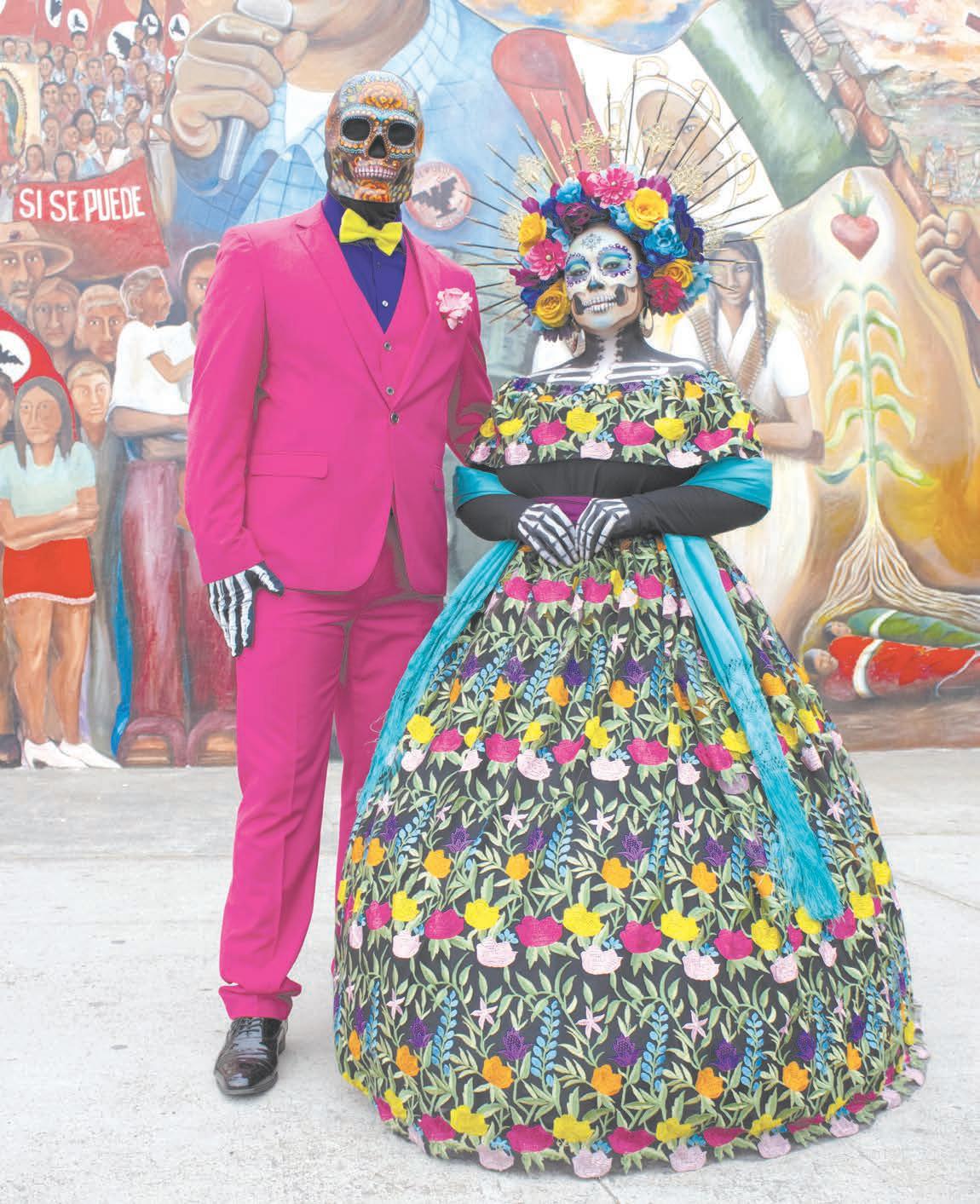

RECLAIM THE NAME—The word “Chicano” started out as a slur, but was embraced by the Pachuco subculture based in 1940s Los Angeles. Mexican-American activists adopted the term in the 1960s as a rejection of “Hispanic.” Chicanos still embrace the independence and style sensibilities of the 1940s Pachucos featured in the Luis Valdez film “Zoot Suit,” though they have evolved with time.






Park born of strife in 1970 today celebrates the richness of Chicano culture and resurrection

Mario Solis could not believe his eyes on the morning of April 22, 1970 while walking to San Diego City College. Bulldozers were flattening ground underneath the brand new Coronado Bridge on land promised to the Logan Heights community for a park.
“What are you guys gonna do?” he recalled asking construction workers.
“Building a parking lot for a Highway Patrol station,” answered one of the crew.
!Chale!
Solis ran to City College and barged into a Chicano Studies class taught by Gil Robledo.
!Ya basta!
Rico Bueno, Josie Talamantez and David Rico “went on red alert,” according to an account published by the Chicano Park Steering Committee. Bueno, a Vietnam veteran, sent classmates to other schools and neighborhoods to rally under the bridge. Solis climbed aboard a bulldozer and started flattening the land as others planted trees and cactus, the first landscaping of the nascent Chicano Park.
SDPD arrived and asked who was in charge. It was “Spartacus” in reverse. When police approached, activists pointed randomly to others. There was no violence, but there was resolve – notably from Jose Gomez.
“The only way to take that park away is to wade through our blood,” he said.
SDPD officer Al Puente, who had the Barrio Logan beat, warned his superiors against attacking the park lest women and children be killed or injured. Protesters were calm, but red-hot angry, according to Gomez.
“We are ready to die for the park!” artist Salvador “Queso” Torres shouted to a gathering of city and state officials.
Gomez agreed.
“Our community had already been invaded by junkyards, factories and a bridge built through our barrio,” he said. “Some of us decided it was time to put a stop to the destruction and begin to make this place more livable.”
Supporters poured in from around the region and the nation. The occupation of the park rolled on for 12 days. After some saber rattling and threats of imprisonment, San Diego city officials relented and agreed to buy the land from the state to establish a park.
One of the best ways to learn the history of the park is to listen to Ramon “Chunky” Sanchez and Los Alacranes Mojados perform their song “Chicano Park Samba.”
“A park where all the chavalitos could play so they wouldn’t have to play in the street and get run over by a car,” sang Chunky, the favorite troubadour of Cesar Chavez. “¡¡¡Órale Raza, Vamos al Parque!!!”


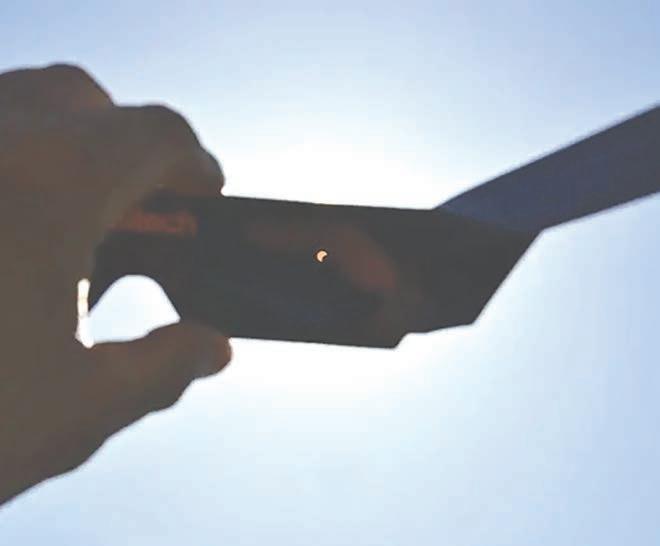
THERE GOES THE SUN—A rare total eclipse tracked across Texas, the Midwest and New England in April, plunging the Path of Totality into a cool dusky darkness. The centerline experienced 4 minutes, 28 seconds of darkness, causing animals to prepare for sleep.

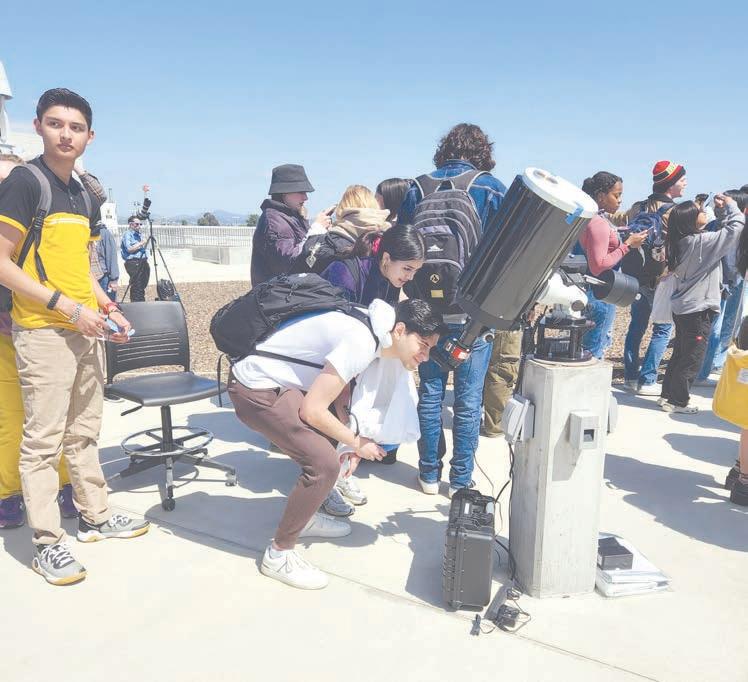
God winked at Southwestern College on April 8 as a partial eclipse of the sun briefly dimmed and cooled SoCal. Other parts of America on a bending path from West Texas to Maine had a full eclipse experience, including nearly 4-and-a-half minutes of a circular sunset that dropped temperatures as much as 20 degrees in Texas and the midwest.
Astronomy faculty set up a solar viewing center on the roof of the Math and Sciences building. Students fared better than early indigenous Caribbean people who were fooled by malevolent Christopher Columbus who convinced them his god was eating away the sun in 1503. Some American conspiracy theorists, including the notorious Alex Jones, peddled paranoia for profit.
Albert Fulcher, an outstanding EIC at The Sun, feted as Emeritus President of the San Diego Press Club
Albert Fulcher had no idea when he stumbled through the door of his first ever journalism class at Southwestern College that two decades later he would exit the San Diego Press Club as one of its revered leaders. Fulcher recently turned over leadership of the venerable club that has roots going back to the 1890s. He has been credited with making it a more student-friendly, inclusive and service-based organization. The current San Diego Press Club was founded in 1973 and has included most of the region’s greatest journalists over the past 50 years.
Fulcher was recently honored as President Emeritus with lifetime rights and benefits.
A precursor to Fulcher’s regional leadership talents is still nestled in the creaky old newspaper lab ensconced in a “temporary” building since 2003. Among the program’s countless awards that line the walls and shelves of the newsroom is a little red one that stands out. A tennis ball sized shiny apple rests on a wooden base with a golden plaque that reads: ALBERT FULCHER, BEST STUDENT MEDIA LEADER.
The College Media Association named Fulcher America’s most outstanding Editor-in-Chief almost 13 years ago after he and his feisty staff fought off a dozen attempts to shut down the student newspaper and its website, defame and fire its advisor, and prevent student journalists from breaking what is now known as the South Bay Corruption Scandal. After The Sun reported on successful efforts by builders and architects to bribe college officials to obtain multi-million-dollar construction contracts, the San Diego County District Attorney raided their homes and charged them with 264 felony counts of extortion, bribery, perjury, falsifying official documents and myriad other crimes.
The Sun was later honored by the San Diego Press Club, Society of Professional Journalists, National Student Press Freedom Association, Associated Collegiate Press, College Media Association, American Civil Liberties Association and several other national First Amendment and news media organizations. The battles endured by Fulcher and his staff were chronicled on CNN, NBC, ABC and CBS, as well as the Chronicle of Higher Education and many other national print publications.
Fulcher was honored by Southwestern College with its Student of Distinction Award and was presented a special award for courage and leadership by the governing board. His experienc-


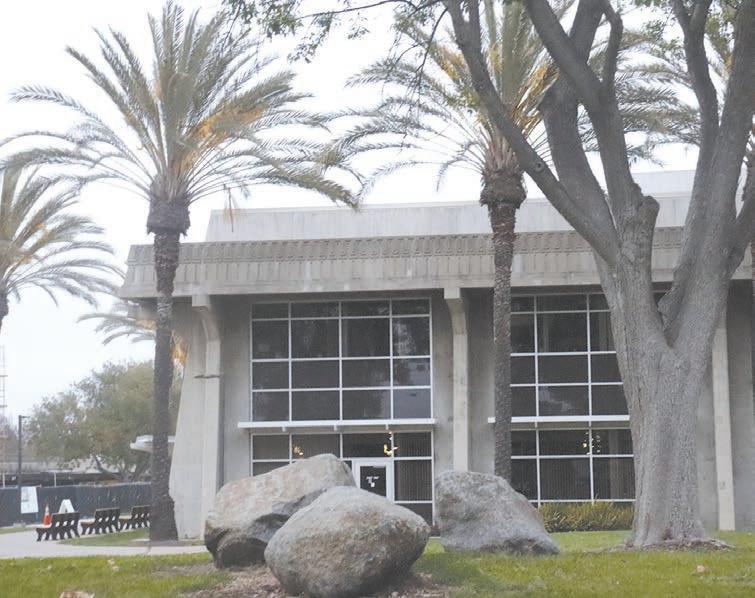
Anunexpected power outage caused classes to be cancelled for most of two days when a 60-year-old main electrical cable failed. Electricians and college officials said the system was likely overmatched by all the construction. (above) Dusk brought near complete darkness to the campus, with the exception of the STEM building, which has its own generator.
Many well-paying careers only require one- or two-year degrees
BY LUCAS HUERTAFive-and-a-half is the new four.
A typical “four-year” Bachelor’s degree now typically takes more than five-and-a-half years depending on a student’s course of study.
Certificates, however, are holding steady at one-two years and can get students into well-paying jobs much quicker than Bachelor’s programs.
Southwestern College offers about 60 career education options including training for paralegals, police officers, emergency medical technicians, firefighters, recording engineers, drafters, mariachi musicians and an array of others. Most can be completed in a year or two and may lead to well-paying careers.
Automotive repair certificates have helped hundreds of students get on the road to good careers, according to Brian Palmitter, an instructor in the automotive department.
• CONT FROM PG 8
Former journalism student became honored leader of San Diego Press Club
es at Southwestern changed the direction of the college and his life. Today he is the managing editor for Integrity Newspapers Incorporated, which includes The Star News, East County Californian and The Alpine Sun.
It all started with a Journalism 101 class at Southwestern.
“It totally changed my career path,” he said. “I went to Southwestern right after I had been laid off at the beginning of the recession. In 2007 I went looking for a job and since I had never gone to college nobody was hiring me. It was really frustrating because I had been in the Navy for 10 years and worked my way from the bottom to the top. I had worked for a dental laboratory in San Diego, starting out as a driver and working my way up to chief of operations. After that I worked for a multi-billion-dollar internet advertising company.”
Each time he applied for other positions he was stiff-armed for the same reason – no college education. Fulcher started taking classes at Southwestern, originally for a two-year certificate in Microsoft Office. Fate intervened.
Journalism 101: Mass Media and Society beckoned.
“The reason I decided to take a journalism class was that people I had engaged with couldn’t write a simple email,” he said. “I always wound up in management, so I figured I needed to brush up on my skills in writing, to talk to people about how they write.”
Journalism 101 was more about journalism history and the industry than writing, so Fulcher signed up for Journalism 171: Writing for Publication. It would be fair to say he exceeded expectations.
His professor loved an article Fulcher wrote about his experience surviving AIDS and encouraged him to publish it. Fulcher was thinking local newspapers, Dr. Max Branscomb was
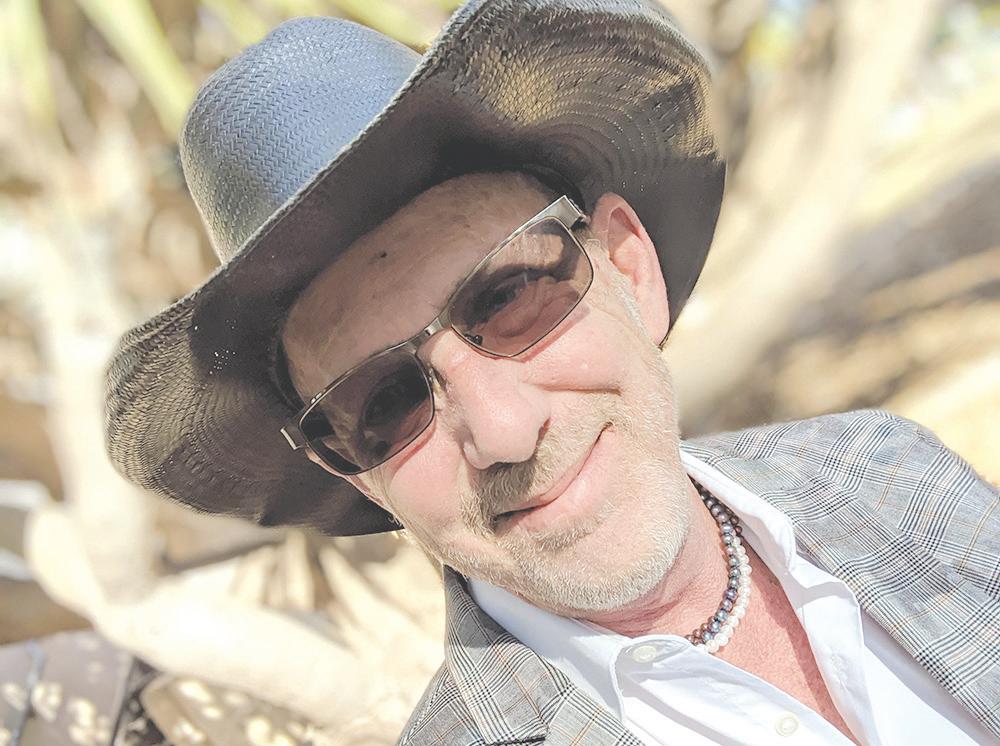
thinking “Newsweek.”
“I thought he was nuts because that was something audacious I would never have dreamed of trying,” Fulcher said with his native Mississippi twang and country boy humbleness. “But I submitted it like he said.”
On the first day of class the next fall, Fulcher walked in unannounced as Branscomb was going over the syllabus for his new Writing for Publication class. Fulcher told the students that the class had worked for him and that he had been published a few days earlier in “Newsweek.”
Branscomb joked that he should hire Fulcher to bust in on all his classes with great news like that, but instead encouraged him to join the staff of The Sun.
Like all good hero stories, Fulcher was at first reluctant to join because he already had a 21-unit schedule and a vision of a Microsoft Certificate.
“Max kept after me,” he said. “He can be a stubborn old boy when he homes in on something. I joined. Best decision I ever made.”
Fulcher swiftly moved into leadership positions on the Editorial Board and was granted a column – one of journalism’s greatest signs of respect. Branscomb also pushed Fulcher to freelance for professional media outlets to build his portfolio.
“I was working at a Subway Sandwich shop when I started writing for Patch (an online journalism site run by former San Diego Union-Tribune editors),” he said. “All the professionals I met told me to stay at The Sun until I got a job in the news media. I was still on the newspaper staff when I was hired at The Star News.”
The original job opening was for a staff writer, which, coincidentally, went to current Southwestern College Governing Board Member Robert Moreno. Fulcher was instead asked if he would come aboard as Editor of the East County Californian. He accepted.
He embraced the position and become a popular figure in the East County thanks to his rural upbringing and fondness for cowboy hats. The region was an intriguing mix of old, conservative White folks and a burgeoning minority population fueled by Chaldean immigrants from Iraq and other Middle Eastern nations.
“Albert has an innate kindness and respect for all people that made him so well-liked and effective in those East County communities,” said Branscomb. “Albert could have run for mayor of El Cajon where it not for the fact that he lived in Imperial Beach!”
Two years later Fulcher landed his dream job as Editor of Gay San Diego, the region’s best known LGBTQ+ pub -
lication. An outspoken member of the LGBTQ community, Fulcher brought a new energy and perspective to the punchy publication. He later added leadership of the startup Downtown San Diego to his portfolio of responsibilities.
The Integrity newspaper chain lured him back. He is currently Editor of The Star News, East County Californian and Alpine Sun.
“I had no thoughts about being a journalist,” he said. “It was all Max, I can tell you that. In my years of working with Max and The Sun he has this ability to see talent in people and encourage them to take directions where they can succeed just like he did for me. (Students may) have no clue that we have a talent or special ability until someone spots it and tells us. He totally changed my career.”
Journalism gave him the voice to advocate for people and issues important to him, Fulcher said. He remains a warrior for LGBTQ people, a passion that grew out of the AIDS crisis. An AIDS patient himself, Fulcher said he was blessed to survive HIV after becoming one of the early patients to enroll in an experimental drug cocktail program. It worked.
“Those are my most passionate things to write about,” he said. “I just think people in general are fascinating. There are these great moments in this profession when you talk to someone and as soon as they start talking, you can’t wait to write their story. Even as you are writing it you know it’s good. Even before you write it you start to write it in your sleep. I always love those interviews.”
Fulcher radiated joy during his appearances as President of the San Diego Press Club. He enthusiastically greeted students at Press Club events and told them that he was once a student journalist, too.
“That’s where it all started for me,” he said. “That’s where it starts for so many people who work in the news media. Your college newspapers have so much to offer, so much to teach.”
Fulcher said he left his student leadership award in the newsroom so future generations of journalism students would see it.
“Maybe it will inspire some young person to follow in my footsteps.”

“We have a very weird situation here,” he said. “Automotive is probably unique from other programs, but it serves a lot of people very well.” Palmitter said automotive students learn how to fix engines, electronic systems, heating and air conditioning. An Automotive Service Excellence Certificate is the goal of most students, he said. This certificate means the student is certified to be a mechanic and ready to be hired at a shop. Some may choose to go in other directions.
“Not everybody that comes here for an automotive skill ends up in automotive,” he said. “Some guys end up working for the electric company.”
Mark Sisson, a professor in the Film, Television and Media Arts program, said an FTMA certificate can open many doors.

“We are preparing students to engage in many different areas including camera operations, cinematography, editing, television and multi-studio cameras,” he said. Sisson said certificate courses introduce students to industry grade cameras, lighting and sound design in preparation for studio work and live broadcasts. Internships with broadcast outlets like NBC7 can also be part of a certificate program.
“Sometimes students start a certificate program and discover they really like the discipline and move into a Bachelor’s track,” he said. “That’s always a cool thing to see, too.”

“I think if you feed yourself interesting music, ideas, people and experiences they will challenge and reward you. ”
— MATT RICH, artist

Drama students dust off an American classic of paranoia, fear and manipulation – and issue a 2024 warning
BY VALERYAH LARA-URREA and YANELLI ROBLESMore was at stake than witches in 1953 when Arthur Miller staged his tragic masterpiece “The Crucible.” America itself was in danger of losing the soul of democracy to the cancer of McCarthyism and the Red Scare. Paranoia and anxiety reigned. Miller himself took a lashing from the House Committee on Un-American Activities, which accused him of being a communist sympathizer.
Ruff Yeager, Southwestern’s savvy professor of theater, almost certainly saw what a mesmerized audience saw – a timeless allegory for fear and hysteria in the era of myopic MAGA. Somewhere in a New York courtroom a sneering want-to-be authoritarian is crying “witch hunt!”
“The Crucible” is a notoriously difficult and draining show, and Southwestern’s increasingly ambitious theatrical team was up to the task. The mostly-student cast was dialed in. There were no noticeable dropouts or concentration lapses that often pepper academic theater. Cast members slowly and steadily twisted open the cauldron of anxiety, leaving discomfit audiences squirming.
There were moments of brilliance, particularly Santiago Gordillo’s heartbreaking portrayal of tormented John Proctor. The flawed but decent Proctor was the stand-in for the victims of McCarthyism and the Latino scapegoats of Trumpism. Gordillo thoughtfully crafted Proctor’s steep character arc, moving him from a charming preRevolutionary ladies man to the destroyed but principled figure facing his doom at the hands of the menacing hanging judge. It was a breathtaking performance.
Taylor Wiggins stirred the simmering pot as chief antagonist Abigail Williams, the Regina George of the Mean Girls of Salem. Her not-so-innocent Abigail is the arsonist that ignites the fire storm of false accusations, using her feminine wiles to manipulate and wreak havoc. Wiggins is a tornado in a petticoat who twists people’s lives like taffy in her angular fingers, enjoying every sadistic second.
Maria Bonzca (a jittery Elizabeth Proctor), Lalo Sanchez (conflicted Rev. Hale) and Kevin Stevens (smug Rev. Samuel Paris) anchored a solid, well-rehearsed cast. There was meaningful chemistry, evidence that the actors had done their homework studying the backstory of their characters’ relationships.
The closing night audience had the privilege to see a master class by Yeager, stepping in as villainous Judge Danford for an ill cast member. Props to the cast for the professionalism demonstrated by working with an emergency understudy who was on book.
Michael Buckley’s sublime set was Satan’s Sandbox, a ponderous tray of finely ground dirt suspended in the air as the barefoot cast paced and pranced. It was a veritable dust bin of history that embodied the suffocating atmosphere of Salem during the witch trials. Buckley’s minimalist magic put the focus on the characters without distractions.
Miller’s devils of fear, manipulation and the consequences of blind faith are running loose again in today’s United States of Amaga. “The Crucible” prompts
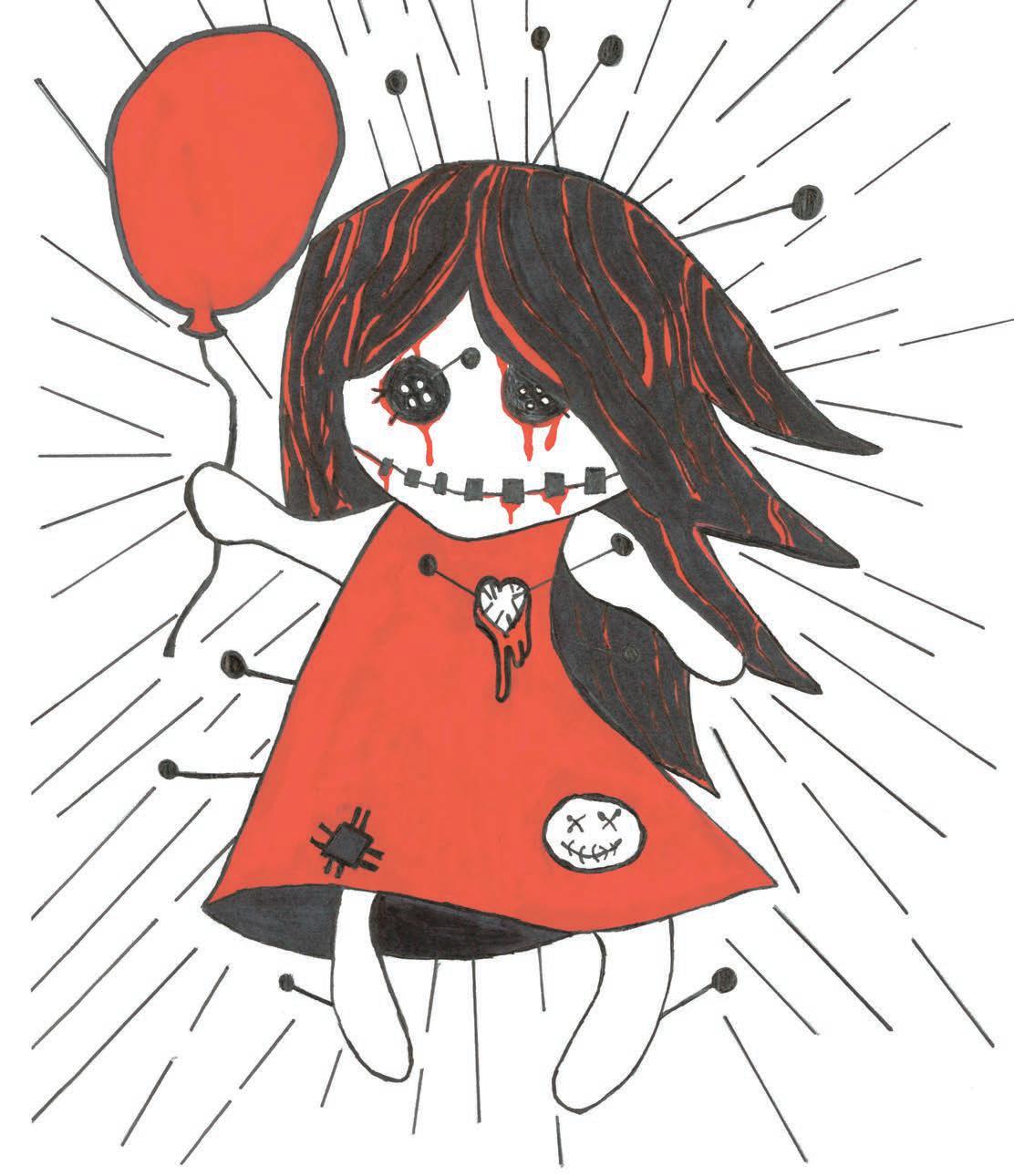
audiences to reflect on the dangers of groupthink, unchecked power and scapegoating. Miller admonishes us to stand up to injustice and call out hypocrisy lest we be consumed by it.
Like the best works of Shakespeare, “The Crucible” has transcended time to remain relevant and instructive.
We can only wish for history to repeat itself. The jittery, nihilistic politics of the 1950s gave way to the sunny optimism of John F. Kennedy and Camelot. Here’s hoping the bleak Trump ‘20s fade in the light of a more enlightened era that leaves the “witch hunts” in the dystopian past.
BY
POPPETS ON DISPLAY

The Museum of Witchcraft and Magic is a museum dedicated to European witchcraft and magic located in the village of Boscastle in Cornwall, south-west England. It houses exhibits devoted to folk magic, ceremonial magic, Freemasonry, and Wicca. / Wikipedia Image Courtesy of MWM
SDSU art professor combines 2-D, 3-D concepts to create unique new forms
BY EMILY ESPARZAMatt Rich was born to be an artist.
He was born to an artist and raised in an art studio. He played with art supplies. He is now an art professor. None of which explains how he turned art on its head.
Rich has rejected so much of what he grew up learning to become a maverick who has blended the 2-dimensional art of painting with the 3-dimensional art of sculpture.
Rather than Art 2.0 his is Art 2.5. He
rejects the constraints of dichotomy and is unconcerned about symbolism.
His work is existential, or in the current vernacular, “It is what it is.”
“I want to say, you are what you eat,” he said. “I think if you feed yourself interesting music, ideas, people and experiences they will challenge and reward you. You will be feeding your soul. You’ll feed your mind, and that will be reflected in your work.”
Rich said his mind and imagination have been well fed.
“I was lucky to always have jobs and museums, and then I started teaching for 20 years in the (SDSU) art department,” he said. “So I’ve always been lucky enough to be around it.”
Rich’s work combines two- and three-dimensional objects and architecture that challenge the

idealism of the painting’s supports and surfaces. It may appear like random shapes to the untrained eye but it is actually sophisticated and creative. He said he wants the viewer to engage with his art pieces.
Brittany Stroj, a student worker who helps run the art gallery, said Rich’s work can be an acquired taste.
“In the beginning, I didn’t see a purpose but when I heard about his techniques and how he came up with them, I found it intriguing,” she said.
“I would never think of something like that.”
Paintings on display correlate with Rich’s sketches, said Stroj.
“It helps a lot when you look at the sketches and see the overall process,” she said. “Every artist has their own unique technique and strategy. Rich
uses collage techniques. Anything can be art.”
Rich said he did not want his art to be singled out as a sculpture or painting the way people single out political parties. He merges two-dimensionality with threedimensionality and thinks dimension should not battle each other but embrace and unify both objects.
Instructional Art Technician Eric Rosciam said to art interpretation is like sitting in a stadium. Everyone is watching the same event but will have different perspectives on the game. Synthesis is the essence of creativity, like combining chocolate and peanut butter or drums and guitars. Rich is content with mixing it up in his search for meaning. He remains unconventional and non-dimensional.
“Jim wanted students to have fun and grow as people.”
Susan Reasons, SC tennis coach

ILLUSTRATION BY IVAN MEDIDA / STAFF
Jim Spillers, the highly-respected Athletic Director whose career spanned four decades at SDSU, Grossmont College and Southwestern, died recently. He was 62.
Spillers was AD at Southwestern from 2015 to 2021 when he was forced to retire to battle throat cancer. He had served in the same position at Grossmont for 10 years after working at SDSU for more than 15 years. Spillers was a track and field athlete at SDSU in 1983 and ’84. In his 10 years at Grossmont, he oversaw two CCCAA State Championships, one national football championship, and was honored twice with the Chet DeVore Award for best athletic department.
At Southwestern he inherited an athletic program that was still stung by the turmoil of the South Bay Corruption Scandal years of 20082013. A $75 million football stadium project had been mired in corruption and incompetence that caused nearly $30 million in construction mistakes, sports had been eliminated and coaches were quitting.
He won by not trying so hard to win. Spillers steered the culture away from competitiveness toward experiential. Long-time tennis coach Susan Reasons said Spillers was “amazing” and “a great guy.”
“He always told me, ‘Susan, just make sure your (women) have a great intercollegiate expe-
rience,’” she said. “He wanted students to have fun and grow as people.”
Reasons said Spillers pushed staff and students to be the best versions of themselves. He made people feel supported, she said, and attended home games. He always seemed to find time to talk to student-athletes.
Jennifer Rodriguez, who doubles as assistant tennis coach and women’s soccer coach, agreed.
“Our players remember his support and the positive energy he brought,” she said.
After women’s tennis was axed in 2010, Spillers brought it back in 2017. Spillers and Reasons began working on the plans for the brand new tennis facility in 2017.
“They’re putting together a committee (for the tennis center),” Reasons recalled Spillers telling her. “Coach, I want you as my right hand person, right there with me.”
Reasons retired in January 2021 during the confusion of COVID. An hour-long phone call from Spillers changed her mind, she said.
“Short retirement,” said Reasons. “Jim wanted me back to help plan the new tennis facility, so I came back.”
Faculty and staff who have never watched an inning of baseball or down of football respected Spillers for his support of the LGBTQ community. An opening day event in the college gymnasium featured a segment on the difficulties faced by transgender Americans. Dan Cordero, a transgender activist and Southwestern alum-
nus, was a keynote speaker. At the end of his presentation, Cordero asked the audience in the packed gym rhetorically, “If things get tough, who will stand up for me?”
Spillers, who was sitting in the front row near Cordero, immediately sprang to his feet.
“I’ll support you, Dan!” he said in a booming voice.
Spiller turned and gazed across the audience. One by one other college employees stood and shouted “I’ll support you!”
“It was a beautiful moment and an amazing example of genuine leadership,” said a friend of Cordero’s who witnessed the moment. “It was like that moment in the movie ‘Spartacus’ when everyone bravely stood to support him.”
Rodriguez said she last saw Spillers at the funeral of Athletic Department employee Kathy Denopolis, who worked closely with him during his time on campus. Spillers was enduring grueling cancer treatments but made the effort to attend the funeral to show respect for a close friend.
“I was really surprised to see him,” Rodriguez said. “Jim being Jim, he was so supportive. He was so proud of me. He told me to just keep going, you’re going to do great things. I’m happy that I got to see him and talk to him one last time before he (died). Even though he went through (terrible) cancer treatments, he was still Jim.”
Eduardo Ruiz contributed to this story.


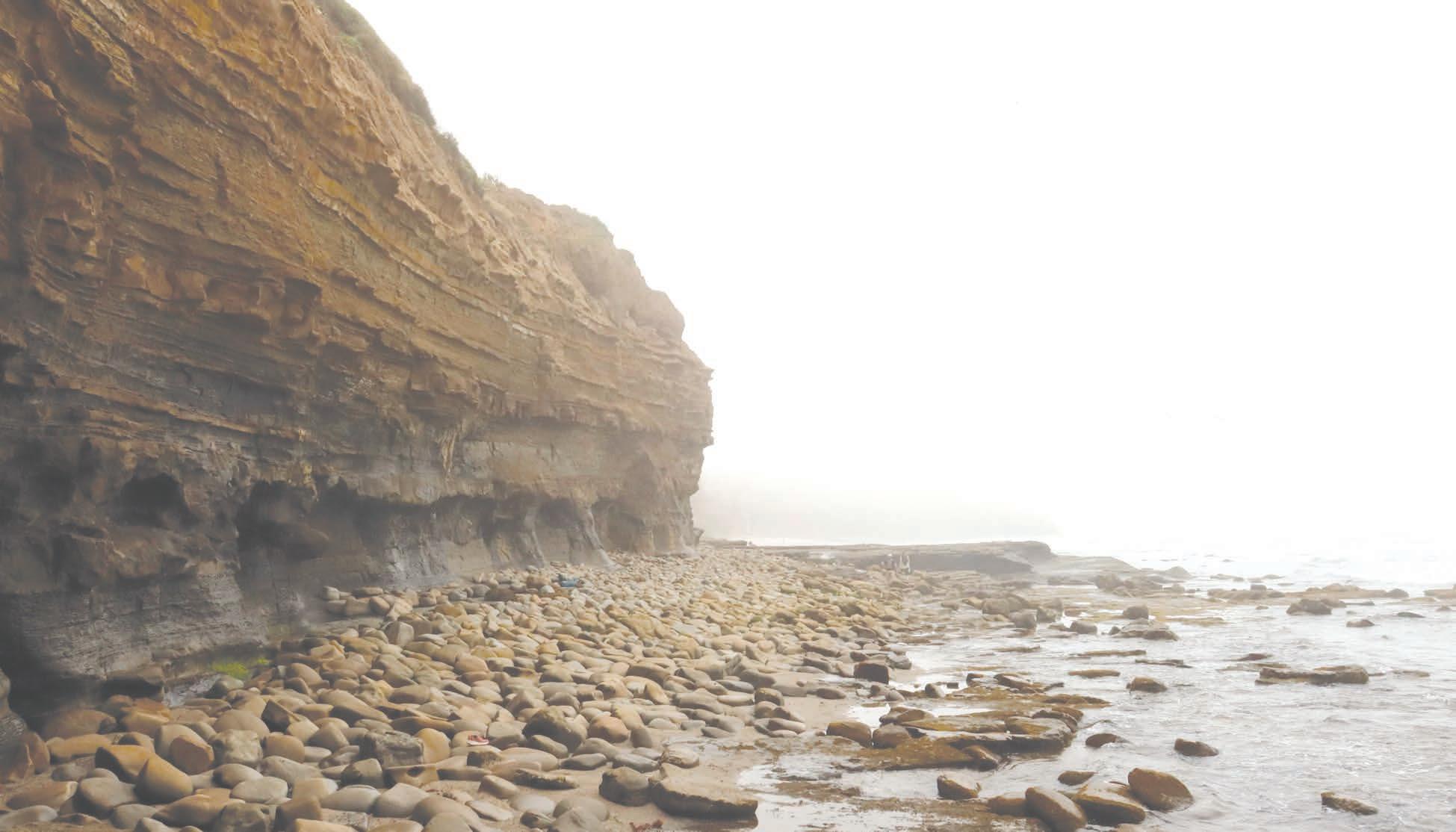
“We do not inherit the earth from our ancestors, we borrow it from our children.” — Native American Proverb
Earth Day is perfect. A warm sun illuminates a peaceful morning. Gentle winds rustle the young leaves of a dawning. Fresh air off the cobalt ocean fuels the verdigris plants and array of animals scurrying about their day. Beauty abounds. Mother Earth loves us. Why do we treat her with such negligence?
Our lovely planet is deteriorating right before our eyes, but humanity continues its plundering, destructive ways. Littering, pollution, plastic waste, fast fashion and wasteful consumption chip away at one of the most remarkable places known in the cosmos. The terrible human habit of discarding things once they are worn out has taken on an alarming new scale. Now we have people talking
BY ANAHY J. GUTIERREZ | A PERSPECTIVEabout discarding Earth. Religious fanatics preach that God will save us from ourselves so we needn’t worry. The “Star Trek” crowd says not to worry, we will move to Mars then other planets to live among the Klingons and Vulcans.
Pope Francis says God expects us to be good stewards of the Earth.
Steven Hawking said humans evolved on Earth and are meant to live on Earth, not some far flung life-supporting world that may not exist. Elton John was right, Mars is “cold as hell.” Trashing Earth and hopscotching to the red planet is a fatally fantastical fetish. Fortunately, it is not too late to save Earth. We all need to pitch in.
Here’s a few things we can do right away:
n Dispose of car oil properly. Auto Zone locations across San Diego County offer free oil recycling services. Likewise for O’Reilly Auto Parts, Jiffy Lube and Pep Boys.
n Save Our Water, California’s water conservation campaign, advises us to save water by fixing leaks, using recycled indoor water outdoors, turning faucets off when not in use and taking short showers.
n Proper waste disposal is critical. Sort discards into three bins: blue bins for recycling, green for compost, and black for trash.
n Travel by bus and trolley benefits the planet and is cost effective. San Diego County’s Metropolitan Transit System (MTS) is improving its service intervals from 30 minutes to 15 at night and on weekends.
n Pick up trash in your neighborhood one day a week. We can all help keep plastic out of the gutters and away from the drains before it gets into a stream and then the ocean.
It is only fair that we care for our Earth the way she cares for us. Every day is Earth Day. If we all do a little bit we’ve all done a lot.


College’s first full-scale powwow is a grand celebration of peace
BY ALEXA LIMA, EMILY ESPARZA and BRIANA NUÑEZAll Heaven was breaking loose. The Kumeyaay were home. It was a glorious late winter day, and the drums were as thunder as The People entered the circular performance arena on the manicured grass of a soccer field temporarily consecrated for a higher purpose. From across the continent they came, Iroquois, Diné, Hopi, Apache, Crow, Yokuts, Cheyenne, Mohawk, Sioux, Kumeyaay and other Human Beings. Across the arena threshold they came, entering in a wave of joy. Draped proudly in vivid colored shirts and dresses, festooned with feathers, jangling with bells and footed in leather they danced to Mother Earth’s heartbeat.
CONT’D PG B2
Josh Calley (Apache)
As a child Calley split time between San Diego County and the Apache reservation in Southern Arizona. He was a Southwestern College super athlete who ran cross country and competed in a number of track and field events, including the decathlon. Calley was also Editor-in-Chief of The Sun and an award-winning photographer.
Albert Fulcher (Cherokee)
A U.S. Navy veteran, Fulcher was a returning student who became one of Southwestern College’s greatest ever journalists. He helped to lead The Sun through the hostile tenure of Raj Chopra, the notorious former president who tried to shut down student publications to cover up a vast corruption scheme. Fulcher was named National Student Media Leader of the Year and was an SC Student of Distinction Award recipient. He led his staff to the National Student Press Freedom Award for his dogged defense of student free speech rights. He is the Editor of the Chula Vista Star News and President Emeritus of the San Diego Press Club.



“It’s a good day to be an Indian!” declared Master of Ceremonies Ral Christman, Sr.
It was a good day to be anyone within the sound of his voice.
For the first time in its 60 years Southwestern College hosted a full scale powwow. For the first time in at least 300 years the region’s Kumeyaay People were calling the shots on land atop the Bonita Mesa that for millennia had been a village or a seasonal transit camp.
“Welcome home,” said a tearful woman under a pop-up canopy fluttering with artsy t-shirts and Native-themed surf hoodies.
Credit on the program went to the office of Student Equity, Programs and Services – deservedly – but the spirit behind the day was first-year Assistant Professor of Native American and Indigenous
Sheilah Naajiibah Dasher-Green (Dine’)
A Southwestern College Student of Distinction Award recipient, Green was a Native American activist and journalist who won national awards at The Sun for her coverage of Indigenous People’s struggles in Flagstaff, Tucson and San Francisco as well as repatriation of Native American remains from Southwestern College to regional tribal leaders. She arranged a special campus event featuring a World War II Navajo Code Talker. Green was honored by her Dine’ People as a Navajo Princess (for leadership and service) and was one of the most honored students in her class at CSU San Marcos. She is an awardwinning documentary filmmaker.
Camila Alejandra Gonzalez (Yaqui)
A three-semester Editor-in-Chief of The Sun, she led the organization during the pandemic and brought home two collegiate Pulitzer Prizes. She was the 202223 National College Reporter of the Year. Gonzalez has earned more than 50 awards for her writing,

photography and leadership. She is a Southwestern College Student of Distinction Award recipient and last year’s Native American Journalism Association News Writer of the Year. Abel Silvas (Acjachemen/Kumeyaay) Actor, mime, dancer, stand-up comedian, educator, historian and tribal leader, Silvas was a force of nature famously known by his comedy nom de guerre, Chief Running Grunion. He was a very popular comedian and teacher with a deep expertise of Coastal Native Americans. He studied mime with the legendary Marcel Marceau at the University of Michigan but was hardly quiet when it came to Native rights. Silvas led the effort to mark the burial sites of Native Americans in Old Town, scores of which were built on and paved over. He also battled government anthropologists who concluded that the Acjachema People were extinct. Silvas used a genealogy chart to prove he was Acjachema and his biting humor proved he was alive. Sadly, Silvas died last year at age 63.
“Be your own tribe, be your own self, but always be aware of everything around you. Take care of everything around you and it will take care of you. Your leadership is needed in this community to strengthen this circle, a sacred place for everyone.”
ROBERT ANDERSON, Head
of the Powwow

Studies David Solomon, a member of the region’s Kumeyaay People, and Lucia Napolez, president of the Native American Students and Allies club (NASA). Solomon, a long-time advocate for local Indigenous People who performs with dancers and musicians on regional television programs, said the powwow was a source of great joy.
“This is the first annual,” he said. “I hope there will be many, many more.”
Solomon is an accomplished Kumeyaay bird singer and a talented cedar flutist. Bird songs were nearly extinguished as Kumeyaay culture was denied to generations of children but have been making a happy comeback. So too gourd dancing, featured earlier in the verdant arena. Swaths of
Kumeyaay culture were guarded and kept alive in the highland valleys of Baja California where southern Iipay speakers were cut off from their northern kin by the border during the time of the Treaty of Guadalupe Hidalgo. Language, songs, dances and other elements of Kumeyaay culture are now taught to young people on many of San Diego County’s 17 reservations.
CELESTIAL BLESSINGS
Chuck Cadotte, a senior spiritual leader from the Dakota Standing Rock Sioux, offered a prayer. “Grandfather. Creator. Please bless our traditions,” he said. “Bless the young ones so that when they grow up they can pass on traditions to honor you for generations. Bless the old ones from whom we learn.
Bless the drummers who sing songs to honor you and Mother Earth. Bless the dancers and the arena staff. Bring peace upon our land and to the lands across the Big Waters.”
Cadotte paused and slowly turned his steady gaze around the arena at the array of dancers –some 4, some 74 – whose flowing raven hair was tousled by the early afternoon breeze. Feathers tied to regalia by slender strips of leather fluttered. An occasional bell from a jingle dress clinked as the dancers stood reverently, some with sweat running down their cheeks.
“Thank you for our health,” he said a little more deliberately. “Thank you for our spirit guide. Thank you for allowing us all to be here.”
Bobby Wallace of the Barona Band
of Mission Indians (the English designation for the Kumeyaay) alluded to the Kumeyaay People’s brush with extermination. Spanish conquistadors, Mexican expansionists and American settlers all treated the Indigenous Kumeyaay with stunning cruelty and barbarism, systematically driving down the population. Wallace said at its nadir about a century ago there were only about 700 Kumeyaay left alive. He said there are about 4,200 today.
“Thank you ancestors for watching upon us,” he said, his head bowed and his eyes pursed shut. “Thank you ancestors for being with us all the time. We are here. We did not go away.”
As Wallace spoke with more emotion the sun created an enormous circular rainbow in

the veil of clouds overhead. A small cloud in the shape of a heart appeared in the circle, leaving mouths agape and arms tingling.
Orbiting the main arena was a circle of Native artisans and jewelry makers. Their shimmering silver and turquoise pieces were intermingled with t-shirts, dresses and blankets celebrating Native culture with colorful loom work, spiritual feathers or screaming eagles.
“It’s cool to be here, there is a nice vibe,” said Haseya Begay, a Diné jewelry artist. “The people are nice. I’ve sold several pieces. I will definitely come back next year if there is another.”
NASA President Napolez agreed.
“It’s amazing to be here,” she
said. “Things are changing in our community. Good changes. This fall there will be the first ever Native American History class. I can’t wait.”
Drummers and dancers – rested and rehydrated – were ready for another round of celebrating in the heart of the arena. Two drum groups alternated during the afternoon of dancing. Green River Drum Group was the Host Northern Drum, which performs the Northern Style of Powwow singing. They are based out of San Diego. Shakey Town is a Southern Style Drum based out of Los Angeles, whose infamous earthquakes are the inspiration for its name. Both groups played buffalo hide drums about a meter across featuring 5-10 musicians at a time.
Jingle dress dancer Winter Begay, a Southwestern College biology major, represented her college and her Diné People. Begay said she has danced at powwows since she was a little girl and adopted the jingle dress from the Ojibwe tribe. Jingle dress dance is meant to mimic the sounds of rain, she said, and promotes healing.
Philosophical Head Man Robert Anderson of the Diné People is a Spiritual Advisor who lives and works in San Diego as Lead Counselor at -Tribal Treatment.
“Ya’ ateeh! (Welcome!) Walk gently on Mother Earth,” he said softly. “Go down a good path. Music and drumming can get you back to a good path. Dance is a philosophy. It’s a lifestyle. It’s a way back to the Right Way.”
Anderson said he had addiction issues as a young man and has been on the “spiritual red road of recovery” for 26 years. Addiction, domestic violence and other maladies can be generational, he said.
“We need those brave cycle breakers,” he said. “It can take a generation or two to fix things up.”
Then a shout out to the locals.
Latinos can be Indigenous, too, he said, if they have indigeneity in their ancestry.
“No matter what,” he said, “if you are Mexican you are not an illegal alien!”
An appreciative audience encircling the arena applauded and drew closer.
“Bless the healers,” said Anderson. “(Social workers) who bring people into the healing
circle should make more money than any other kind of work. A true leader will be in the circle with the people and will suffer with the people. We all belong in the circle equally.”
Humans are social spirits, Anderson said, and need healthy connections to others.
“Be your own tribe, be your own self,” he said, “but always be aware of everything around you. Take care of everything around you and it will take care of you. Your leadership is needed in this community to strengthen this circle, a sacred place for everyone.”
The Kumeyaay were home. All of The People were home. It was a good day to be an Indian. It was a good day to be a guest on Mother Earth.

‘WELCOME HOME’—Indigenous La Jolla and Kumeyaay People have lived in San Diego County for at least 10,000 years. Chula Vista has many archaeological sites that were villages and transit zones.




